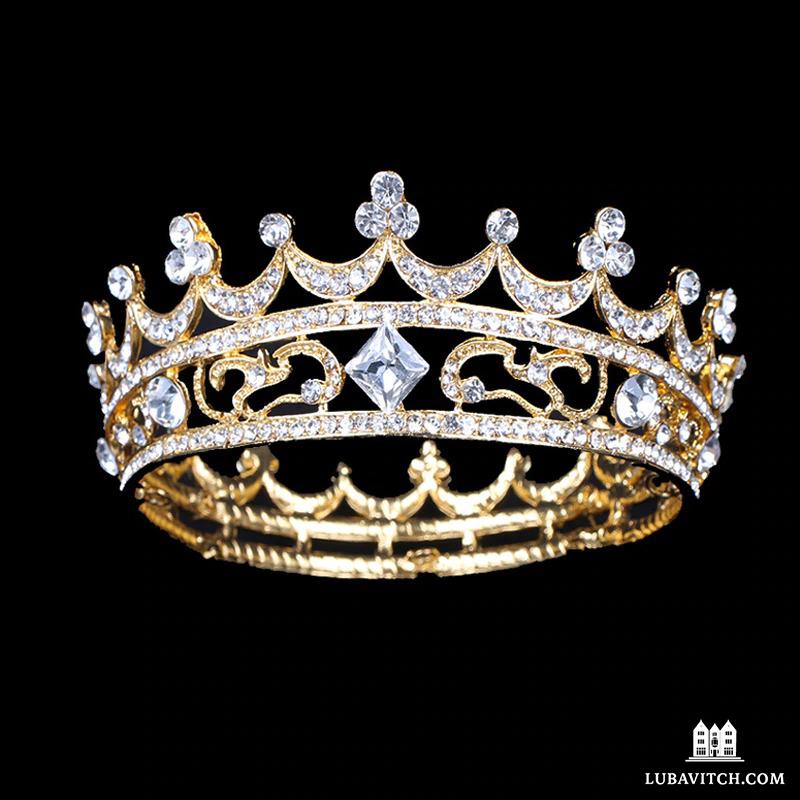Purim celebrates a familiar plot: A nation threatened with destruction is saved at the eleventh hour when its enemy’s plans are miraculously thwarted. Deliverance comes through Esther, introduced to us in the Megillah as a young, shy maiden, at first, unprepared when called upon by Mordechai to take action to save her people from annihilation.
The Baal Shem Tov teaches us that if we read it as a historic document without regard for its immediate relevance, we have not fulfilled the mitzvah of reading Megillat Esther on Purim.
In a way, we can read Esther’s story as a paradigm of the “evolution” of the traditional Jewish woman of our own day. We asked women in leadership to share some of the salient points in the Story of Esther that are instructive to them in their own lives.
Wisdom of Hindsight
Shaina Rosenfeld
A careful reading of the Megillah tells us that what takes just a few minutes to retell actually took place over the span of a decade. The Purim story begins with a 180-day party in celebration of the “third year of [Ahasuerus’s] rule.” The party is then extended for seven days and all inhabitants of Shushan are invited as well. Like proper citizens of the capital, the Jews want to join. When Mordechai warns against it, the community, as always, has those who heed the warning and those who disregard it. From Vashti’s death until Esther’s crowning there is a span of several years as the king’s messengers search for an appropriate replacement. This is followed by yet another year of searching when Esther refuses to reveal her origins. Only then is Haman eventually promoted viceroy. And still, we are five years into the timeline, and less than three chapters deep in the Megillah!
The events from the middle of the third chapter of the Megillah–when Haman finally acted on his burning jealousy and anger at Mordechai and his people–until the Purim celebration in Shushan towards the end of the 9th chapter, took place during one very tense year: “In the 12th year of the reign of Ahasuerus.” Five long years after Esther’s appointment.
Had we been living at the time, it would have never occurred to most of us to draw parallels that seem so obvious today. Would we draw parallels to events 10 years prior to understand the chain of events? As Mordechai tells Esther, “Perhaps it is for such a time that you achieved royalty.” Could we see that six years down the line, Esther forcibly becoming Queen was not just fortuitous but divinely orchestrated?

I often think about the story’s title telling us the lesson we must learn as we try to live the story as it happens now. The Hebrew words Megillat Esther are mutually contradictory. Megillah has the Hebrew root of gilui–revelation–while Esther is from the word hester–hidden. The story we read is also full of innate intrigue and time lapses, of dreams and thoughts of the main players that no one else but an Omniscient G-d can know of.
There is much to this world we cannot see the purpose or meaning of. So much is hidden from us–Esther, locked away in a castle with a maniacal despot. But our journey, our reading of this story, needs to come as a Megillah, as a revelation of the hidden layers. Then we do not understand meaning and purpose only in hindsight but can slowly discover it and use it to inform our actions and propel us forward in the present.
Then, we truly are not reading the Megillah as if it has happened in the past.
Shaina Rosenfeld grew up the daughter of Chabad representatives in Hamilton, Ontario. Today, she and her husband continue the work her parents began. Shaina is executive director and program coordinator of Chabad Lubavitch of Hamilton and the Beit Menachem Jewish Student Centre serving the Jewish students at McMaster University.
Cosmic Destiny
Rochel Baila Yaffe
The Jews gathered in their cities throughout the provinces of King Ahasuerus to attack those who sought to harm them. No man stood in their way, for fear of them had fallen upon all the nations. (Esther, 9:2)
And he sent letters to all the Jews, to the one hundred and twenty-seven provinces of Ahasurus’s kingdom, words of peace and truth, [instructing them] to observe these days of Purim on their proper dates, in the manner established for them by Mordechai the Jew and Queen Esther, just as they had accepted upon themselves and upon their descendants the observance of the fasts and their lamentations. (Esther, 9: 30-31)
And the word of Esther confirmed the observances of these Purim days, and [the story] was inscribed in the book. (Esther, 9:32)
Torah is the original hyperlinked text: the language used in one section can serve as a portal to other areas which use the same language. Far from a coincidence, such a parallel helps to illuminate a deeper message that is not readily apparent. This is true in particular for Megillat Esther (the Scroll of Esther) as it was written in a manner that conceals G-d’s presence. Many areas of the Megillah echo not only the sentiment, but even the exact language, of other parts of the Torah such as the stories of Joseph and Daniel. I believe there is a connection between the above-quoted verses and a section of the Book of Jeremiah. By connecting these two texts, we discover that Queen Esther has nurtured a hope and vision that extended far beyond her—and the Jewish people’s—immediate safety and prosperity.

The Megillah concludes with a seemingly anticlimactic description of Esther and Mordechai attempting to establish Purim as a holiday for future generations. The Talmud (Tractate Megillah 7a) clarifies what this entails: recording the Purim story on parchment (like the other books of the written Torah), including it in the canon of Tanach, and reading this megillah annually. Esther, the Talmud relates, asks the Sages, to “write me and establish me.” This is the “word of Esther” that “confirmed the observances” and what was “inscribed in the book (see above verse 31).” Esther seems to place herself squarely in the middle of the narrative.
Rashi, the medieval commentator on Torah and Talmud, finds it necessary to elaborate on the Talmudic “write me and establish me”: he adds the words, “so it should be for me a name.” This phrase, desiring a name for oneself, connotes self-centeredness, as evidenced by another place in the Torah which uses a similar phrase—the generation of the Tower of Babel. Those wicked people strove to overtake and conquer G-d, as it were. Why would Rashi tack on this phrase and negatively color Esther’s motivation?
The answer lies in still another Torah “link” to this unusual phrase: in the book of Jeremiah, when the prophet describes the Jews’ ultimate return to the land of Israel. Jeremiah lived through the destruction of the First Holy Temple in Jerusalem, and he prophesied about the Jews once more returning and establishing a permanent home for G-d on earth. These verses uncannily mirror the abovementioned verses from the Megillah:
I have hidden My face from this city because of all their evil. Behold, I will bring it healing and cure, and I will cure them, and I will reveal to them a greeting of peace and truth. And I will return the captivity of Judah and the captivity of Israel, and build them up like at first. And I will purify them of all their iniquity that they sinned against Me, and I will forgive all their iniquities that they sinned against Me and that they rebelled against Me. And it shall be to Me for a name of joy, for praise and for glory to all the nations of the earth who will hear all the good that I do for them and fear and tremble because of all the good and because of all the peace that I do for it…the sound of mirth and the sound of joy, the voice of a bridegroom and the voice of a bride, the sound of those saying, “Thank the Lord of Hosts, for the Lord is good, for His loving-kindness endures forever,” bringing a thanksgiving offering to the House of the Lord, for I will restore the captivity of the land as at first, said the Lord. (Jeremiah, 33:5-11)
Esther’s request to the Sages is not merely for a record of a local, limited victory over enemies and sanctification of G-d’s name. She sees the links to the cosmic destiny of the Jewish people, for their ultimate salvation from all evil in their return to the safety and holy dwelling of Israel with (she hopes) the complete redemption of the Jewish people.
Rochel Baila Yaffe, a graduate of Barnard College and mother of seven, co-directs Chabad of the Shoreline with her husband Yossi and teaches Judaic studies at Southern Connecticut Hebrew Academy.
Sixth Sense
Miriam Lipskier
“Open Happiness,” one of Coca Cola’s wildly successful advertising campaigns, can be aptly used to describe the month of Adar and specifically the joyous holiday of Purim.
The Book of Esther is read every year on this lively day. It is named for the Queen and heroine, a woman whose very power and essence were concealed. The Hebrew word hester, meaning “hidden,” is camouflaged in the name Esther, sharing the same root and meaning. G-d’s overt presence is also shrouded in the Purim drama.
All of Torah is a lesson and guide book containing relevant wisdom for our modern lives. What can we learn from the connection between Queen Esther, that which is unseen, and joy?
My favorite verse, at the conclusion of the Megillah, describes the state of joy and happiness that the Jewish people experienced when their fate completely turned around with a dramatic and triumphant close. “The Jews had light and joy, and gladness and honor.” (Esther 8:16)
If this verse is describing the emotional gratitude, and jubilation that the Jews experienced, what is the word light, “orah” referring to? (Did they see or feel light? As opposed to darkness?)
Imagine a sumptuous feast laid out on an exquisitely set table in a room where every detail contributes to its perfection, but the blinds are drawn and the light is out. A person standing in this room sees nothing, even though absolutely everything is there. And yet it might as well not be, as the darkness obscures the beauty.

What happens when the light goes on? Nothing! And yet everything changes because now the extraordinary details can be seen and appreciated.
Esther gifted her descendants in every generation with a unique ability, a feminine sixth sense of sorts, to see what isn’t always obvious at first glance. She paved the path with the ability to shine a light of warmth and positivity by pointing out and complementing the goodness and wonders in the people and circumstances around us.
The greatest happiness is realized when one can perceive the potential in a child, the positive qualities in a spouse, or the opportunities for growth in a challenging situation.
Many times in our lives the blessings are there in reality, but unless we turn on the light and focus–we may not see them.
It’s not what is, but how we perceive what is, that makes all the difference. For me, that is Queen Esther’s secret legacy: to know how to radiate true Joy.
Miriam Lipskier is the co-founder and director of the Chabad Student Center at Emory University. Together with her husband and seven children, they have created a vibrant community of Jewish life and learning. She is a teacher of Jewish thought and spirituality and lectures around the country.

Matthew
This was and is a very nice and very intelligent article.